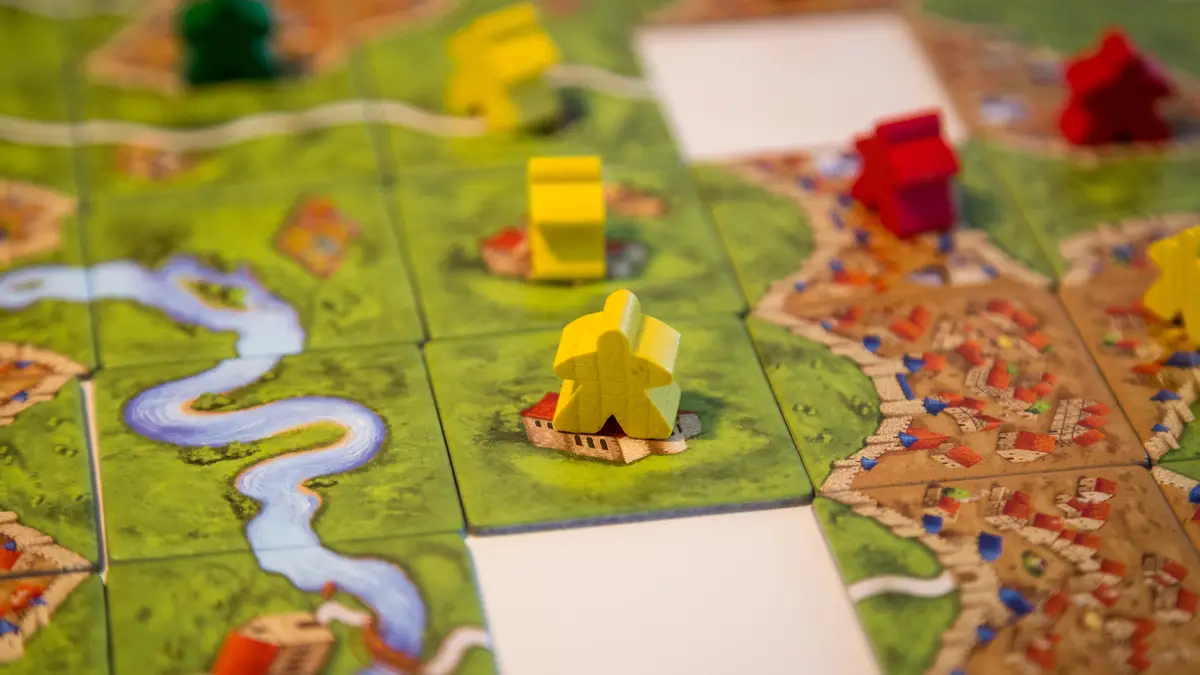‘Carcassonne’ is a Super Competitive Game of Building Idyllic Countrysides


In Carcassonne, you want to build a beautiful civilization in southern France… And lay claim to it before your friends have a chance to.
Named after the walled city in France, Carcassonne is a popular tile-building board game that asks you to draw your own map of the area. And then lay claim to as much of it as you possibly can.
What is Carcassonne?
Carcassonne is a tile-placement game where players draw and place tiles on the southern French landscape. The tiles build cities or landscapes and terrain. Carcassonne is named after the medieval fortified town of Carcassonne in southern France. The real-life Carcassonne and the region its in have been important for trade routes for thousands of years. The city specifically is famed for its fortress-style walls and was restored between 1853 and 1879 and then again in 1997. As a result, the medieval citadel is in exceptional condition despite its age and sees heavy tourism to this day.
The game Carcassonne is made for two to five players. It originally designed by Klaus-Jurgen Wrede and published in 2000 in German and then in English. In 2001, Carcassonne won the Spiel des Jahres and Deutscher Spiele Preis awards.
READ MORE: We’re Jumping Over Each Other to Tell You About Checkers
How is it Played?
Carcassonne is a surprisingly easy game to learn and play.
To start the first specific terrain tile is played face-up with the remaining 70 tiles shuffled and placed face-down for the players to draw from. Players then take turns drawing new a terrain tile and placing a terrain tile on the constantly growing map. Players can then put a follower on their newly placed tile if they choose, and can add up their score for any completed features.
New terrain tiles must be placed face-up and along-side any other tiles already in play so the map of medieval southern France is always being added to, and tiles must be added to in ways that make sense. For example, roads must connect to roads and fields cannot ram directly into a city center.
Newly created terrain features such as roads, cities, cloisters, or fields, can be claimed by a player by placing a “follower” or a meeple on the feature. In most circumstances, only one player may claim each feature. Sometimes, different features will be claimed by different players but later grow into the same feature as more tiles are placed. In this instance the feature is shared between the two players.
Once a feature is completed, the controlling meeple is removed and the feature is counted towards the controlling player’s score.
The game ends when the last tile has been placed. At that time scores are tallied at the player with the most points wins.
Scoring
Each kind of feature has its own points, and some have differing points for game-play and for end-game. This can make Carcassonne‘s scoring look a little confusing. In practice, this is much easier and and faster than you may think.
During game-play cities are worth two points per tile and an additional two points per pennant. And the end of the game, remaining cities are worth one point her tile and an additional one point per pennant.
Roads are always one point per tile.
Similarly, Cloisters are worth one point per tile plus an additional point for each of the surrounding tiles.
Finally, fields are not scored at all during game-play. In end-game they are worth three points for each completed city bordering the field.
Expansions
There have been several expansions to Carcassonne over the years. The ‘Inns and Cathedrals’ expansion adds (you guessed it) inns and cathedrals. These add value and points to roads and cities.
The ‘Traders and Builders’ expansion adds traded goods tiles which add value to fields.
The ‘Princess and the Dragon’ expansion adds magic portals as well as Princess and Dragon figures which can remove followers from tiles.
‘The Tower’ allows players to build up.
‘Abbey and Mayor’ fills gaps in the board to complete otherwise unfinished features.
As well as many other full and mini-expansions.
Spin-Offs
A number of Carcassonne spin-off games have taken the same idea and ran with it. ‘Hunters and Gatherers’ is a stand-alone game that builds forests, rivers, and wildlife, while ‘The City’ grows just within the confines of a city. There is also ‘My First Carcassonne’ for children, ‘Gold Rush’, ‘Star Wars’, and ‘Safari’ spin-offs.
And of course, Carcassonne is available in a video game format. There has been a Facebook application, an iOS and Android mobile game, and a computer game, as well as Carcassonne for Nintendo DS, and XBox 360.
Is Carcassonne Hard to Play?
It’s really, really not. The game looks daunting at first, but new players get the hang of it within two or three rounds. Scoring also looks like it could be tricky, but that also breaks down in a very simple and organized way.
Why is Carcassonne Popular?
This is a game that’s simple, fast-paced, and very easy to get competitive with. Laying claim to features and being strategic in blocking your opponents from growing their features as large as they would like or even from finishing their features is half of the fun. The game is also very quick to teach, to set up, and has unlimited re-playability.
Which is Better, Catan or Carcassonne?
This depends a lot on your personal tastes and what you want from a game that day. They’re both very fun, very popular games with similar levels of competitiveness. Carcassonne can generally be played by more people and has a shorter set-up time. But Catan has the added strategy of resource trading and is played on an already-built map. These are both great games and honestly if you like one, you’ll most likely enjoy the other as well.
Happy adventuring!












